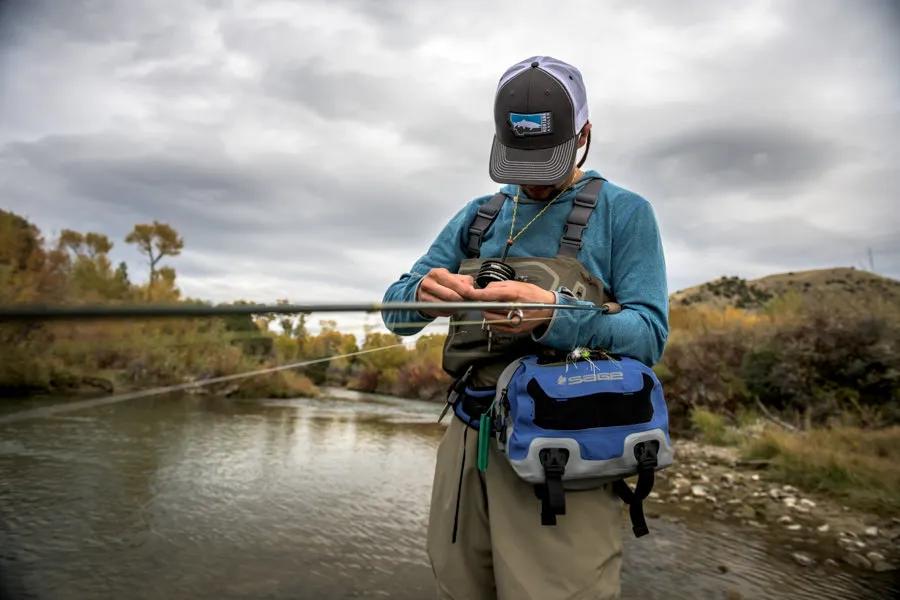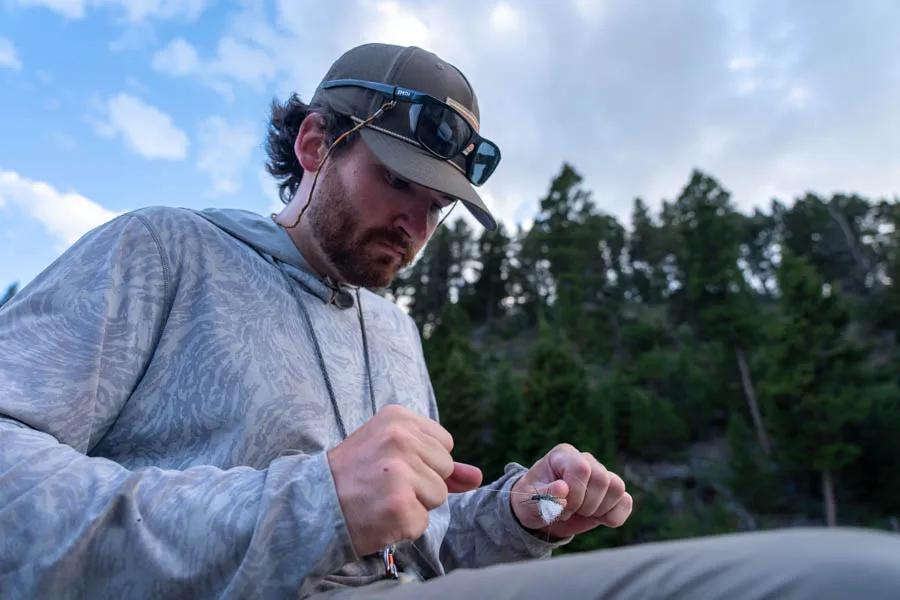
Gather up some of the most experienced Montana fly fishing guides and although they may not all agree on the best streamer or the best grasshopper pattern, they can all agree on the importance of efficiently tying strong knots. The logic is simple--why would you spend well over a thousand dollars on your rod, reel, and line combo only to neglect tying the great knots? Add up the moments of frustration in fly fishing and a fish breaking off because of a poorly tied knot probably tops that list. Tying knots is not difficult, but committing time to practicing tying knots can be because most of us are already maxed for time. If you learn to tie these Four Best Fly Fishing Knots quickly and effectively you will catch more, and bigger, fish.
The Clinch Knot
While every knot in fly fishing is important, the knot you use to tie your fly to your tippet is arguably the most important. Whether you are tying double nymph rigs for the Madison River or just using a single dry fly on Slough Creek in Yellowstone National Park, the clinch knot is vital. Because this connection is often the thinnest material of your leader and tippet combination and the fly is in the mouth of a fish, this connection also has the highest potential for abrasion and stress on the knot. That's a long way to say: learn this knot and learn to tie fast and correct.
The Blood Knot
After the clinch knot, the blood knot is the most important knot. This is a great not for when your leader and tippet really make a difference, like when fishing one of the Paradise Valley Spring Creeks. Mainly used to tie sections of leader together or leader to tippet, the blood knot creates a seamless connection between two pieces of leader or tippet. Veteran fly fishing guides embrace the blood knot for a few key reasons: it has a very slim profile when tied, it can be tied while keeping one end of the tippet connected to the spool, and it is better than a double surgeon's knot when tying two different types of material together.
The Double Surgeon's Knot
Like the blood knot, the double surgeon's knot is used to tie sections of leader together or leader to tippet and some guides even use it to form a loop to tie on a fly. It is easy to tie so most folks new to fly fishing master this knot before the blood knot. In numerous tests of strength a double surgeon's and blood knot both are equally as strong. Some experienced Montana fly fishing guides feel a blood knot is better when tying two materials together that have a larger difference in diameter. Many new anglers use this knot at first, but then learn to tie the blood knot and never go back to a double surgeon's.
The Perfection Loop
This knot is used less frequently than a clinch, blood, or double surgeon's knot but it is still an important knot to learn to tie. It used anytime you need to create a loop or a loop to loop connection. Most new fly lines have a welded loop at the end of the front taper. If they do not and you are able to have a local fly shop create a welded loop to tie a butt section with a loop, then you can use a perfection loop to add a new leader. If you fish in saltwater a lot or fish large streamers and want to pre-tie your leaders or rigs, the perfection loop is a great tool to use as you can pre-tie leaders and easily attach them quickly on the water. While it's possible to use perfection loops to tie on flies, better knots exist for that purpose.
There are many components to a successful day on the water. Some of these you cannot control--the weather and the habits of fish being the two most notable ones. But, there are some things you can control to give you the best chance for success. Those controllable elements include choosing good gear; a basic knowledge of reading water, trout habitats, and hatches; choosing places to fish based on current conditions, for example knowing how snowmelt runoff and streamflows affect fishing options; and always willing to learn and improve your angling skills. Of those skills to master is your ability to tie knots effectively and efficiently. When it comes to being proficient with your knots, the old adage of practice makes perfect is spot on.

